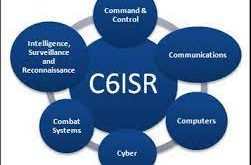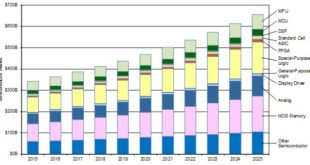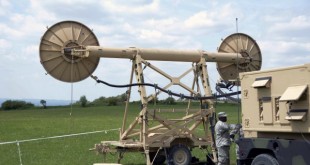The control of electric currents in solids is at the origin of modern electronics which has revolutionised our daily life. The diode and the transistor introduced by Braun and Bardeen and Brattain are undoubtedly the corner stones of modern information technologies. Such devices allow for rectifying, switching, modulating, and even …
Read More »Electronic connectors becoming high-speed, compact and thinner, high frequency and high power connectors.
An electronic connector is an electro-mechanical device whose purpose is to quickly and easily disconnect or interrupt a circuit path or electrical circuits . Most electrical connectors have a gender – i.e. the male component, called a plug, connects to the female component, or socket. The connection may be removable …
Read More »Digital software-defined radar technology for Military
RADAR offers special advantages with respect to other types of sensors including all-day, all-weather operations, long detection distance and, depending on the frequency used, penetration. Moreover, radar can often be carried by a number of platforms, spanning from classic naval and airborne to more recent space-borne, UAVs, such as drones, …
Read More »Militaries moving from C4ISR and C5ISR to C6ISR
Success in traditional warfighting domains now requires mastering the Information Environment, which includes the electrometric spectrum, space, cyber domain, and the data that crosses them. Rapid data-enhanced decision-making, which increases lethality, defines warfare in the Information Age. Success depends on rapidly understanding the environment and enemy to make decisions faster …
Read More »Large Global semiconductor market growth driven by consumer electronics, cloud computing, internet-connected devices (IoT), and Artificial Intelligence
The semiconductor industry is the aggregate of companies engaged in the design and fabrication of semiconductors and semiconductor devices, such as transistors and integrated circuits. The semiconductor industry is in turn the driving force behind the wider electronics industry. The amazing development of electronics in the past decades, from early …
Read More »Troposcatter systems to provide backup to Satellite communications amid increasing space warfare threat
The dominant mode of communication today uses antennas to transmit information carrying high frequency signals using antennas which at the receive site produce an electrical signal which is amplified and demodulated by the receiver equipment. However this form of communication is limited by line of sight propagation limiting the range …
Read More »DARPA RPOD developing E-Waste recycling to address supply chain disruptions of critical elements
Consumer electronics constitute a rapidly increasing source of waste. Cell phones, tablets and the like are typically made of non-renewable, non-biodegradable, partly environmentally toxic materials. A report from United Nations University (UNU) found that the world produced 41.8 million metric tons of e-waste in 2014 – an amount that would fill …
Read More »Electronic Materials for Consumer Electronics
The Global Consumer Electronics Market revenue stood at a value of USD 728.1 Billion in the year 2021 and is expected to reach a value USD 964.6 Billion in the year 2028. Consumer electronic products including personal and home electronics are full of components that rely on materials for proper …
Read More »Through the wall imaging (TTWS) or Wall-penetrating radar technologies assist security forces in counterterrorism and diaster management operations
Urban Warfare Operations are complicated by a three-dimensional environment, limited fields of view because of buildings, enhanced concealment and cover for defenders, and the ease of placement of booby traps and snipers. Unknown individuals hidden from view can slow emergency efforts and can increase the inherent dangers of tactical operations. …
Read More »Satellite Electrical Ground Support Equipment (EGSE)
There is growing utilization of miniaturized satellites for military and defense applications. Defense organizations have been launching communication nanosatellites and microsatellites to provide communication signals to soldiers stationed in remote locations or in dense forests. The military needs more data bandwidth and reliable communications infrastructure for its UAVs, which can …
Read More » International Defense Security & Technology Your trusted Source for News, Research and Analysis
International Defense Security & Technology Your trusted Source for News, Research and Analysis




